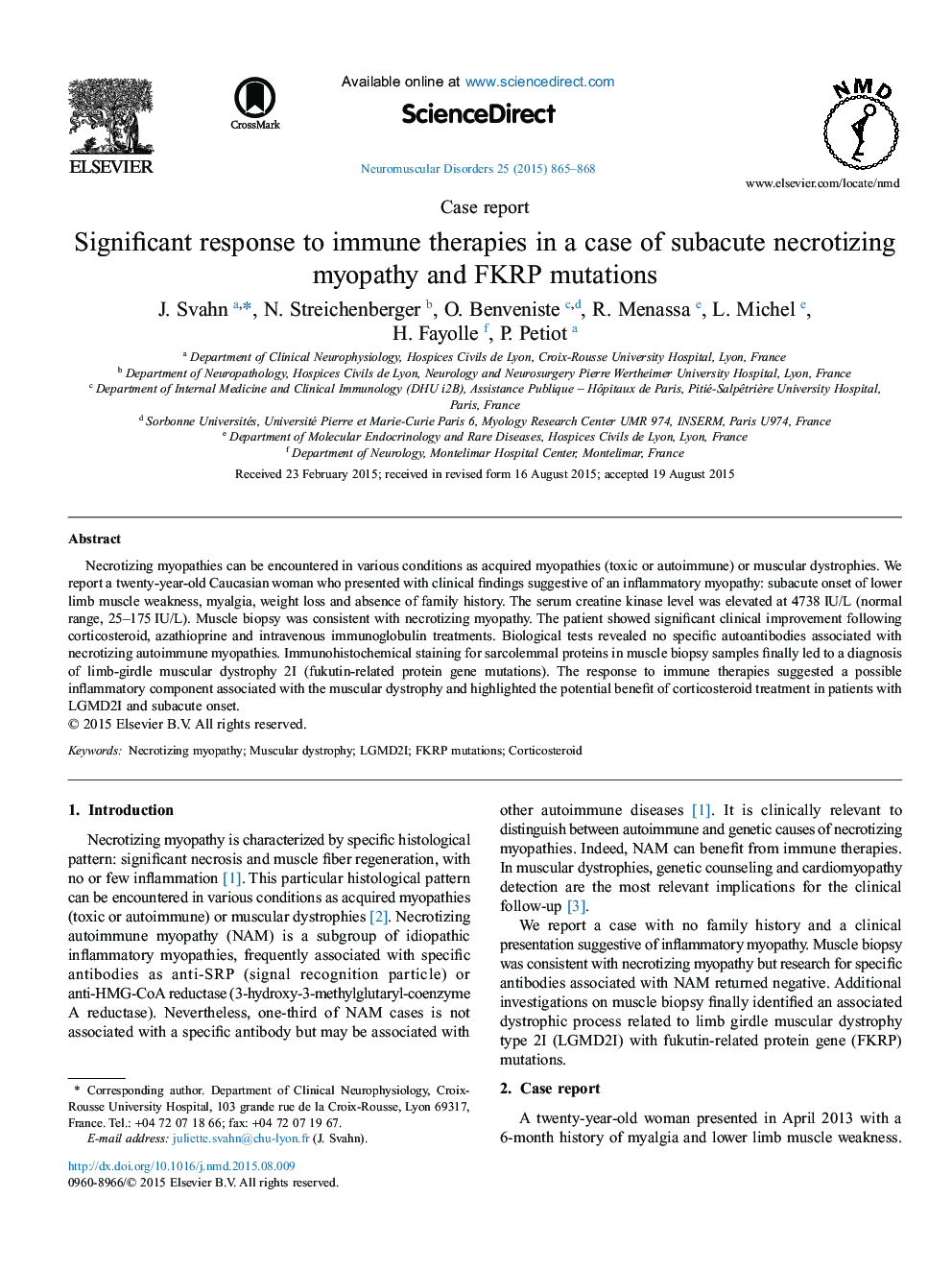| Article ID | Journal | Published Year | Pages | File Type |
|---|---|---|---|---|
| 3078828 | Neuromuscular Disorders | 2015 | 4 Pages |
•Necrotizing myopathies can be encountered in acquired myopathies or muscular dystrophies.•The clinical presentation of our patient was initially suggestive of an inflammatory myopathy.•She presented significant but partial clinical improvement after corticosteroid and immune therapies.•Additional investigations finally led to a diagnosis of limb-girdle muscular dystrophy 2I.•This observation highlights diagnostic difficulties and implications of corticosteroid treatment in patients with LGMD2I.
Necrotizing myopathies can be encountered in various conditions as acquired myopathies (toxic or autoimmune) or muscular dystrophies. We report a twenty-year-old Caucasian woman who presented with clinical findings suggestive of an inflammatory myopathy: subacute onset of lower limb muscle weakness, myalgia, weight loss and absence of family history. The serum creatine kinase level was elevated at 4738 IU/L (normal range, 25–175 IU/L). Muscle biopsy was consistent with necrotizing myopathy. The patient showed significant clinical improvement following corticosteroid, azathioprine and intravenous immunoglobulin treatments. Biological tests revealed no specific autoantibodies associated with necrotizing autoimmune myopathies. Immunohistochemical staining for sarcolemmal proteins in muscle biopsy samples finally led to a diagnosis of limb-girdle muscular dystrophy 2I (fukutin-related protein gene mutations). The response to immune therapies suggested a possible inflammatory component associated with the muscular dystrophy and highlighted the potential benefit of corticosteroid treatment in patients with LGMD2I and subacute onset.
